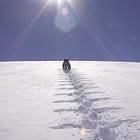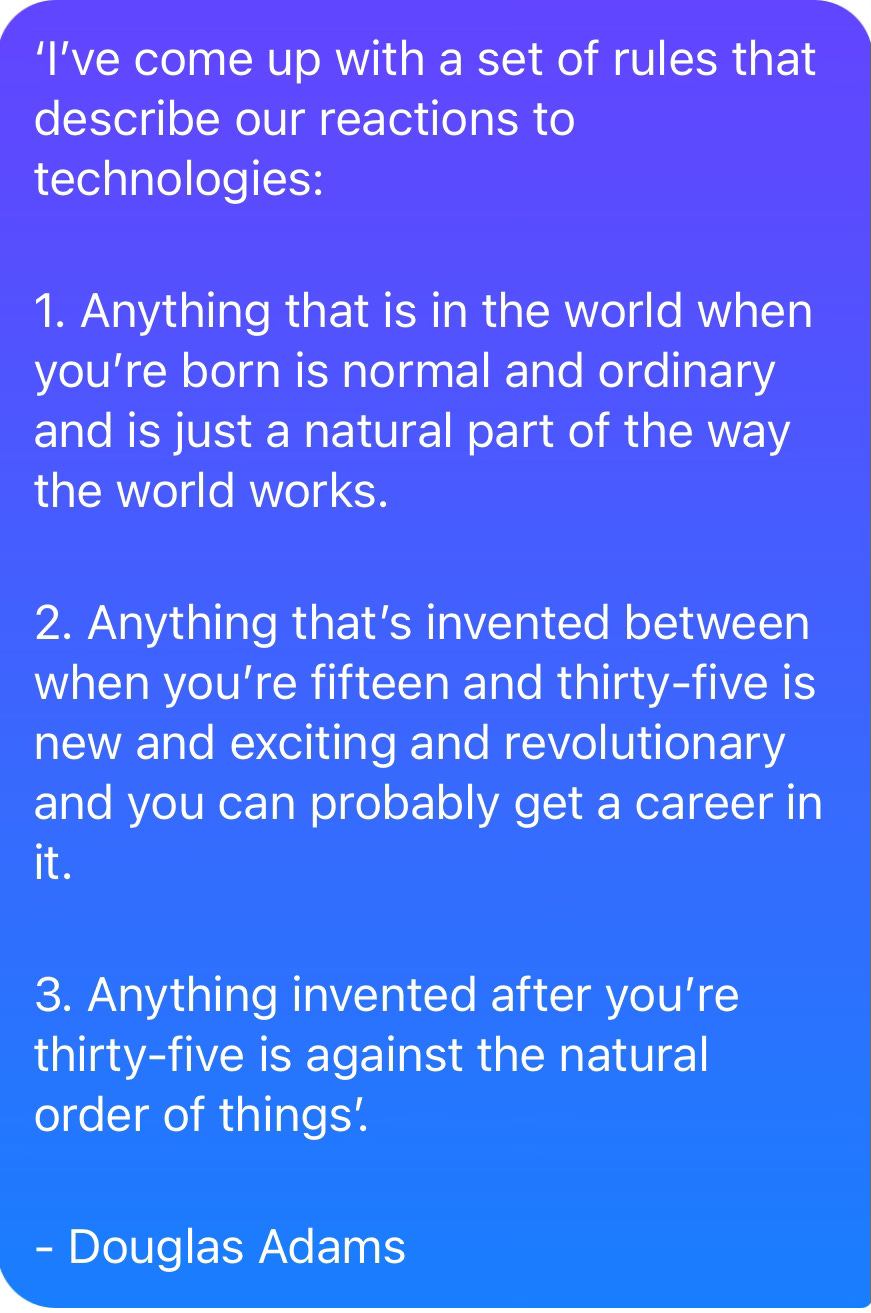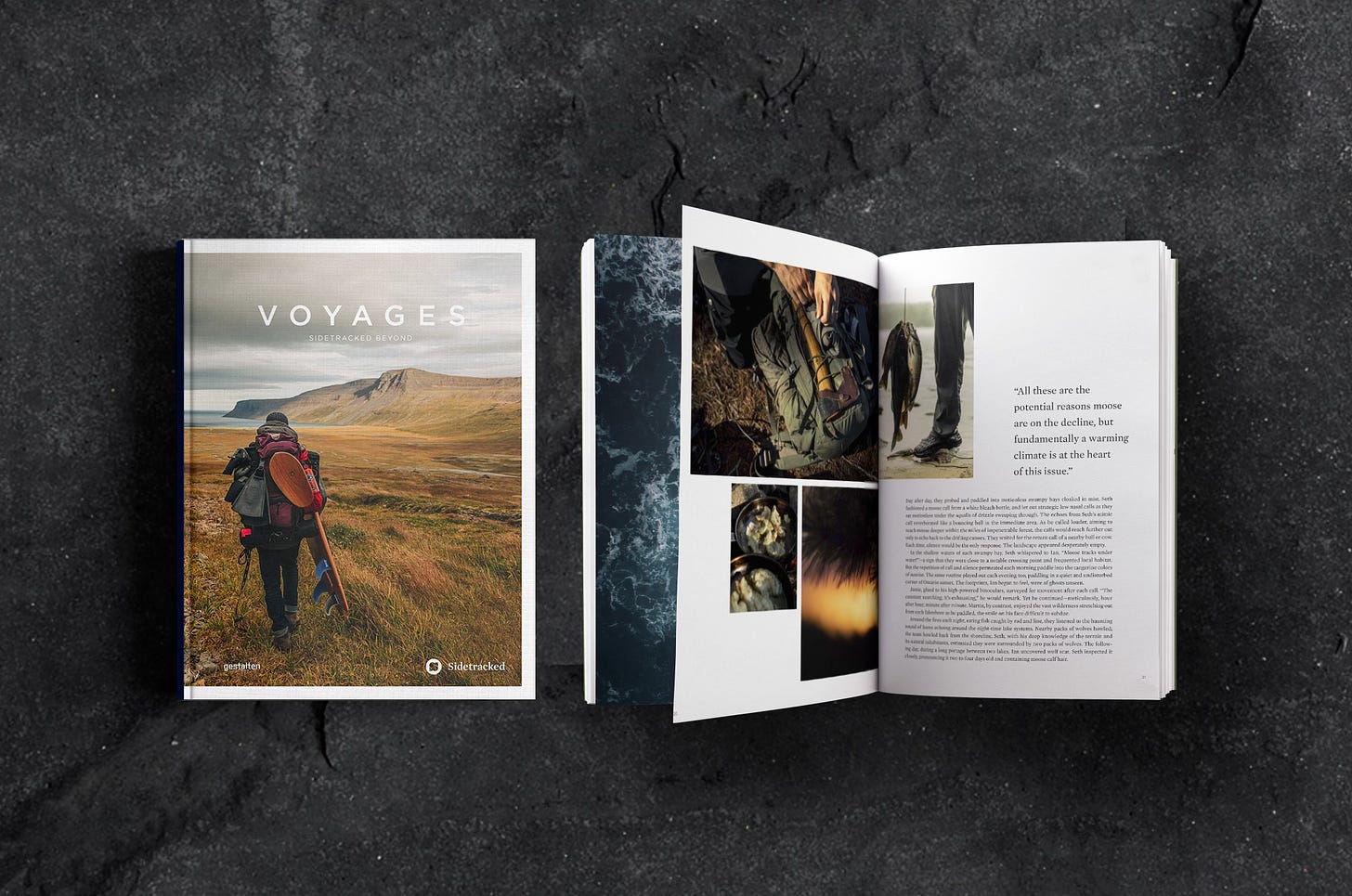Insights: John Summerton - Sidetracked
What the Sidetracked publisher has learned in the decade he's been running the UK's most influential outdoor magazine.
This week’s Insight’s post is free-to-read for all. I wanted to give free subscribers a look at what Insights subscribers are getting every week as part of their subscriptions.
To find out more about Insights, what extras paid subscribers get, and how to make best use of your paid subscription, read my guide:
When you’ve worked in the game as long as I have (29 years and counting), you learn not to take the periodic catastrophising about the death of modern media, or doomy predictions about the impact of some new technology, too seriously.
Yes, every once in a while, a new tech innovation comes along that appears to upend everything (the printing press, the internet, crypto, NFTs; AI at the time of writing). Sometimes, they even do.
But no: it probably won’t mean the end of creativity as we know it.
Instead, what usually happens, as the much-missed Douglas Adams so pithily identified (below), is that younger people embrace it, while older people fret and write hand-wringing blogs about it.
And there are other things that seem to be perennially true, and largely impervious to the vagaries of technology. Like the power of specialised knowledge, convincingly and authentically conveyed.
One of the grand ironies of my own career, for example, is that early on I was almost embarrassed about the fact that I was a ‘snowboard’ journalist, and not a proper one who worked for the Guardian, or some other legacy media outlet.
Now, I realise that this specialism - or niche, if you prefer - is exactly what has enabled me to have such a varied and interesting career.
In contrast, many of the ‘proper’ journalist pals I was so envious of back in the day have had to leave the industry as their roles have either evolved or evaporated.
It is also what’s partially protected me during events such as the 2009 recession and Covid; and is also what has enabled my marketing agency
to continue to thrive over the last two decades, as other agencies following more traditional models, each chasing the same budgets, have struggled.Of course, Looking Sideways is also a proud bastion of this type of very specialised knowledge.
Similarly, a title like Sidetracked, the subject of today’s guest Insights post, has stubbornly thrived over the ten years of its existence by unapologetically and lovingly leaning into the bloody-minded creative preoccupations of its audience and makers.
I was reminded of this the other week, as everybody lost their LinkedIn shit over a New York Times piece that lauded the way that ‘In a Digital Age, High-End Magazines Are Thriving in Print”.
By this they meant American magazines such as Adventure Journal and Mountain Gazette.
But as discerning Brit media consumers know well, magazines such as Sidetracked, Like The Wind, The Ride Journal and Another Escape have been doing this for years - and (if you ask me) to a much higher standard.
This is one reason why I feel such kinship with John Summerton,
, and the rest of the team at Sidetracked. Not just because we’re essentially trying to achieve similar goals by differing if complementary means. But because I know that their pioneering work is much more difficult than they make it look.Why? Because it involves striking out on your own, and being willing to experiment and take risks. To find a clear editorial voice and protect it all costs, with zeal and sympathy. To trust that this well-intentioned work will find a grateful audience and, eventually, the financial and moral support it deserves.
To achieve this with consistently high, industry-leading editorial standards is truly admirable.
The fact is that it isn’t easy to make this model work fairly and equitably. By way of comparison, just look at the number of owners, editors and debtors Wavelength Magazine, for example, has burned through during the same period.
That’s why audiences recognise and appreciate the integrity that a magazine like Sidetracked represents when they see it, and have come to cherish it.
It’s why the title has just celebrated a decade in existence, and why I’m fairly certain it will outlast whatever tech scare story comes along during the next ten years.
And it’s why, on the occasion of the publication of Voyages, Sidetracked’s brilliant new Gestalten book, I’m so chuffed that publisher and close friend-of-Looking Sideways John Summerton has agreed to share some of the lessons he’s learned during the decade he has spent at the helm of this much-loved and most influential of outdoor publications.
This is a brilliant insight from somebody who really HAS succeeded in making a creative life exactly on his own terms - and as such is the perfect topic for this week’s Insights dispatch.
Over to John…
1. Dreaming, believing and starting out
In 2011, I found myself working on (graphic) design jobs that didn't relate to any of my passions and were, frankly, a little boring. In my spare time I enjoyed reading the various outdoor blogs that were popular back then, and I would daydream that there needed to be a 'place' for all of these incredible stories from people adventuring around the world.
Having ruminated on this for way too long, one Tuesday morning in February, I was waiting in line at a sandwich shop on my lunch break when I finally decided to put my plan into action. Armed with a meatball sub I went back to my desk and spent the afternoon designing the first Sidetracked website. The name Sidetracked was from me being sidetracked from my day-to-day job, basically.
Sidetracked magazine started with a simple yet profound idea: to create a platform that celebrates the spirit of adventure, storytelling, and the great outdoors.
For the next couple of years I spent time building the website and growing our audience, albeit very slowly. But at the time, as websites and digital content were getting all the attention, I noticed a renaissance in magazine publishing. But done differently. They were special. Fine print, quality papers, perfect binding etc. Titles like The Ride Journal, Another Escape, Like the Wind were a massive inspiration. I absolutely had to take Sidetracked in this direction.
2. Telling stories
Sidetracked has always been purely the container that allows the content to be the star of the show. I remember finalising Volume One and printing out every single page and sticking them up around my living room. There was immense satisfaction in getting to that point – from starting Sidetracked as a hobby project to getting it to print took about 3 years. That was 10 years and 30 issues ago.
From the very beginning, Sidetracked has been about more than just showcasing stunning photographs or exotic destinations. It's the stories behind the adventures that are at our core. A well-told story can transport someone from their sofa to the top of a mountain, or the depths of a jungle.
It's the personal experiences, the triumphs, and the challenges that resonate most deeply. Every adventurer has a unique narrative, and our job is to bring those tales to life in a way that inspires and connects with people on a profound level.
We do everything we can to ensure the story shines. We have a small but expert editorial team who work with the writers to get the best possible version. And we'll whittle down the photo selection to a shortlist of about 20 that aligns with the narrative.
Then I'll pop my creative cap on and pull together layouts for print. It's still the bit I enjoy the most – looking at the balance of copy and images, looking at shapes and colour tones across the pages, and at the same time making the design as invisible as possible – aside from a few self-indulgent flourishes, of course.
3. Community is Everything
One of the most rewarding aspects of running Sidetracked has been the sense of community that has developed around the magazine.
Adventurers, photographers, writers, and readers from all corners of the globe have come together to share their passion for exploration and creativity. This community has not only supported the magazine but has also been a source of endless inspiration. Collaboration and engagement with our audience have taught me the value of building and nurturing a community that shares a common love for adventure.
I'll often refer to a quote from our mutual friend, Guesty (Mike Guest), whose email footer reads: 'Life's not a competition, it's a collaboration'. He's absolutely right! I used to get annoyed at competitors or copycats appearing and adopting our approach or style (or both). But that doesn't worry me anymore.
In our weekly newsletter I'll happily share stories posted on potential competitor websites and enjoy the fact that we're able to do this. I hope and think we're respected for doing so.
4. Adaptability is Key
The world of publishing and media has changed dramatically over the past ten years. From shifts in social media algorithms to the rise of digital content consumption, staying relevant and engaging has required constant adaptation.
And the way we earn the money has changed too, with traditional advertising no longer being our primary model. I've learned to embrace change, experiment with new formats, and pivot when necessary – and that it’s really okay if an idea fails. The trick is to reflect and move on. This adaptability has allowed Sidetracked to remain at the forefront of adventure storytelling, even as the media landscape continues to evolve.
And we haven't been afraid to venture into new avenues, which this year alone led us to publish a book, put on a (real life!) festival, and create a subset of our business called Sidetracked Studios. These new ventures also keep things fresh and exciting.
5. Authenticity Resonates
In an era where content is often curated and filtered, authenticity stands out. Readers can tell when a story is genuine and when it's not. Sidetracked has always strived to maintain an authentic voice, by sharing real stories of real people. This authenticity has been a cornerstone of our brand and is something that our readers deeply appreciate. Staying true to our mission and values has helped build trust and loyalty among our audience.
Of course, brand partnerships are a big part of our business these days. We've constantly got bills to pay and the production costs of the magazine are going up with each issue. So the work we do with brands and tourist boards enables us to survive. With these projects we do our best to create content that aligns with our mission, although it's not always worked.
You'll remember the Gucci x The North Face collab we did with Jimmy Chin and Jared Leto? The original brief for this started out very, very differently: but took an uncontrollable turn when Covid and some US creative agencies got involved.
When we released the content the reaction was very much shock-horror: how could you do this to our wonderful puffy-jacketed industry?! Wow, did it shake things up! It was divisive, to say the least. But it turns out that issue was one of our best selling. Ha. Who'd've thought it?
6. Perseverance
Running a magazine involves continuous challenges. There have been times when it's been really tough – empty bank balances, relentless deadlines, long days and late nights to keep things going etc. The usual problems with running a business.
However, a passion for creativity and storytelling has always been the driving force that kept me going. This passion has fuelled perseverance through the hardest times, and reminds me why I started Sidetracked in the first place. It's a lesson that applies not just to running a magazine, but to any endeavour in life – when you love what you do, you find the strength to overcome any hurdle.
And 'this industry' is having a hard time. Prices going up, sales going down, trends changing, which shifts budgets to different models.
Things change. I get it. Marketeers see social media numbers, likes and comments, and leap aboard that bandwagon. Increasingly, content is quick to create and quicker to digest. Algorithms decide what we see, which is then dismissed with a swipe.
But this ultimately why I think we need magazines like Sidetracked. It's an antidote to the scrolling, and a chance to slow down and consider meaningful stories. The people we feature have taken time to embark on their own journey, document it properly and considerately.
I like to think that Sidetracked is an archivist – a keeper of precious journeys and arts. A celebration of those that do things properly.
Would I recommend you start your own magazine, or other indie business? Hmm, practically speaking, possibly not, as in so many ways it's a total pain in the ass in so many ways. But if you've got an idea for a project and are ready to jump in with your whole heart, then flippin' heck, yes go for it.
What did you think about the points made in this blog? Let me know:















Thanks Matt!
Thanks Matt, and John for sharing such valuable insight… as someone fairly new to the world of Sidetracked it’s super interesting to learn how it all started 🤙🏼